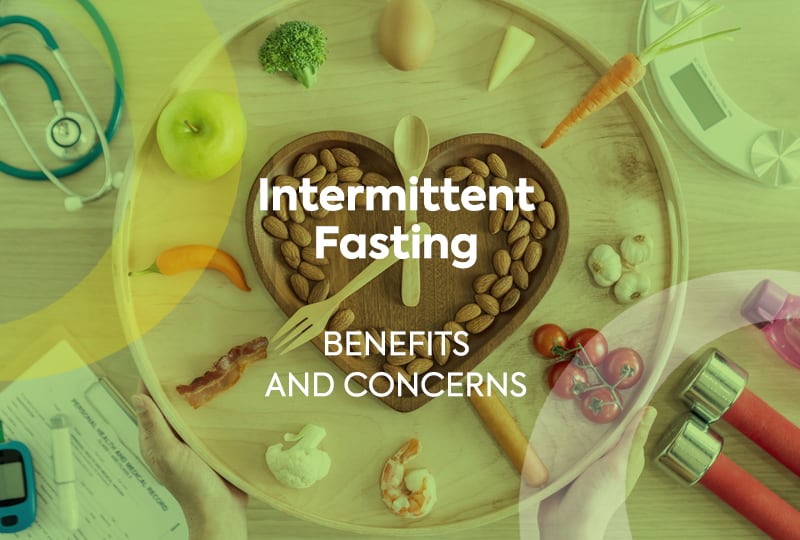Health-minded individuals have probably heard the term ‘intermittent fasting’ thrown around in recent years, but what exactly does it look like, and is it good for you? In general, like any other form of dieting or nutrition management, the effectiveness of intermittent fasting varies by the individual and should be discussed with your primary care professionals. Broadly speaking, intermittent fasting focuses primarily on when you eat and at what intervals, less so on a specific dietary plan.
Potential Benefits of Intermittent Fasting
According to an article in Johns Hopkins Medicine titled “Intermittent Fasting: What is it, and how does it work?, research so far has indicated that intermittent fasting has several possible benefits, such as:
- Better memory- Studies have noted that intermittent fasting can boost working memory in animals, as well as verbal memory for adult humans.
- A healthy heart- Blood pressure and resting heart rates have been measured to improve with intermittent fasting, as well as other heart-related measurement factors.
- Physical performance- Young men fasting for 16 hours demonstrated fat loss while maintaining muscle mass. Mice fed on alternate days showing better endurance running.
- Help with obesity and weight loss- In studies conducted on animals, intermittent fasting prevented obesity. Six brief studies showed that obese adult humans lost weight by intermittent fasting.
- Tissue health- In animal studies, intermittent fasting reduced tissue damage related to surgery and improved results.
Who shouldn’t intermittent fast?
As a relatively new dietary technique, intermittent fasting still requires further examination to fully evaluate its effectiveness. You should always consult with your primary care professionals before making any major long-term dietary changes.
There are some individuals who should not engage in intermittent fasting, according to the John Hopkins article. It is not considered safe to intermittent fast if you are a child or teen under age 18, a pregnant or breastfeeding woman, a person with diabetes or blood sugar problems, or a person with a history of eating disorders.
Popular Intermittent Fasting Methods
The Mayo Clinic depicts utilized iterations of the practice in their article “What is intermittent fasting? Does it have health benefits?”. Here are three common formats that intermittent fasting can take:
- Daily time-restricted fasting- This is probably the most common and most manageable form of intermittent fasting for most people. It focuses on eating a normal diet but only within a standard six- to eight-hour time window each day. For example, a person might have their first meal around 10:00 a.m., smaller snack meals around Noon and 3:00 p.m., and a final meal at about 5:00 p.m. each day. Then, no more eating after 6:00 p.m.
- Alternate-day fasting- This is kind of a day-on and day-off scenario. One day, a person eats a normal diet for them. The next day, they would either abstain from food or limit themselves to one small meal with fewer than 500 calories.
- 5:2 fasting- This involves eating a normal, healthy diet five days a week and engaging in two fasting days a week. The severity of the fasting on fasting days can vary based on dietary requirements.
Remember that if you engage in an intermittent fasting plan under advisement of a primary care professional, you may experience symptoms such as headaches, anxiety or nausea. If these symptoms do not ease over time as your body grows used to your diet, then intermittent fasting may not be the best option for you.
Slice of LIFE is an invitation to and extension of everything happening at Life University. Whether you are a current student, a potential freshman or a proud alum, Slice of LIFE can help keep you connected to your academic community. Know of a compelling Life U story to be shared, such as a riveting project, innovative group or something similar? Let us know by emailing Marketing@life.edu.


Social Media